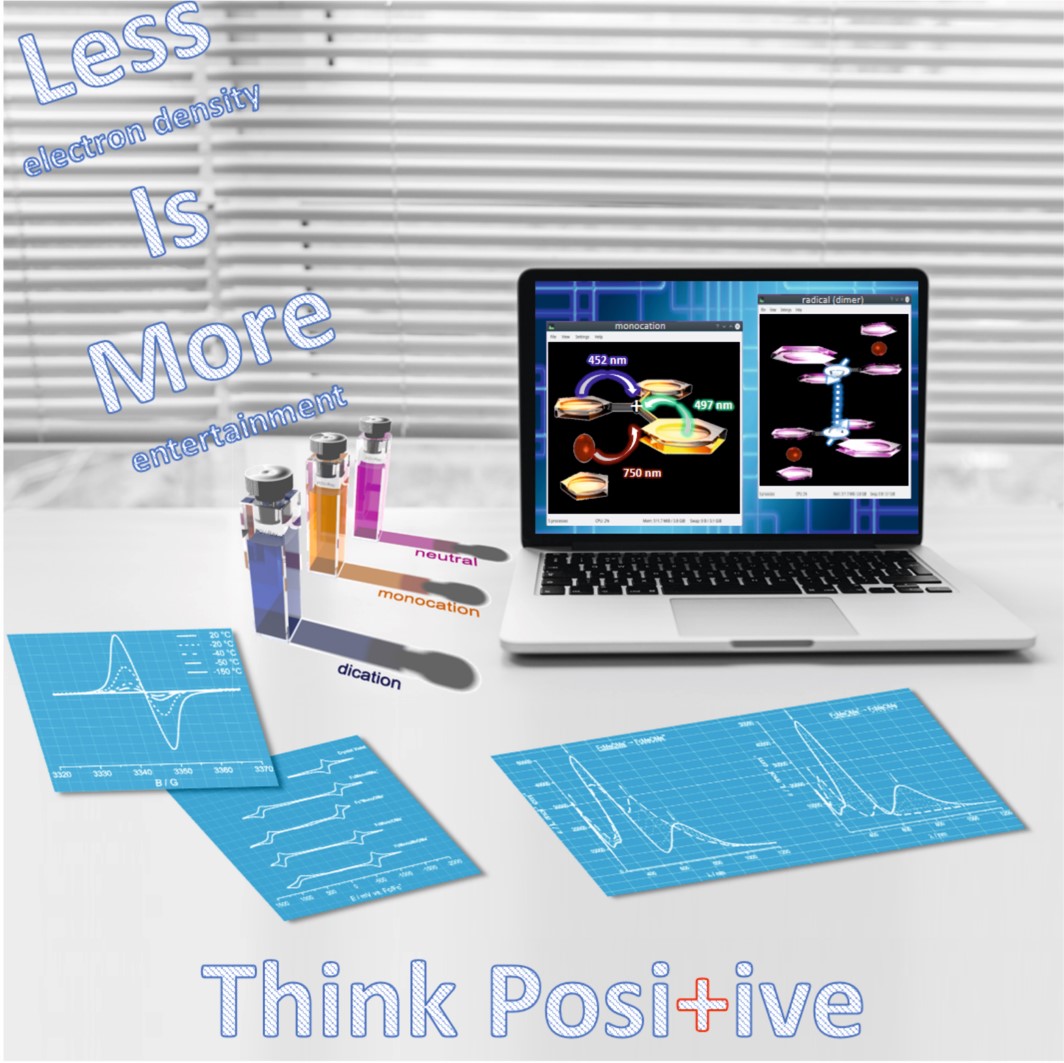
Steffen's Paper Online!
"Electrochemical, Spectroelectrochemical, Mößbauer, and EPR Spectroscopic Studies on Ferrocenyl-Substituted Tritylium Dyes"
Steffen Oßwald, Larissa A. Casper, Patrick Anders, Eva Schiebel, Dr. Serhiy Demeshko, Rainer F. Winter
Chem. Eur. J., 2018, 24, 48, 12524-12538
Four monoferrocenyl tritylium derivatives with donor‐substituted (OMe, NMe2) aryl rings are reported, along with their spectroscopic and electrochemical properties. All the complexes show a one‐electron reduction and a quasi‐reversible ferrocene oxidation at a very positive potential. Small quadrupole splittings, ΔEQ, in Mößbauer spectra agree with highly electron‐deficient ferrocenes. Comparison of the experimental half‐wave potentials for ferrocene oxidation, E1/2 (Fc/Fc+), with those estimated from established correlations of E1/2 (Fc/Fc+) with ΔEQ indicates that the E1/2 values of the anisyl‐substituted congeners FcOMe+ and FcMeOMe+ are affected by Coulombic repulsion between the positive charges at the Fe ion and the neighboring methylium site. Electronic spectra are recorded and interpreted with the aid of quantum chemical calculations. UV/Vis spectroelectrochemical measurements as well as chemical reduction provide insight into the redox‐induced color changes upon ferrocene oxidation or upon reduction to the neutral trityl radicals. The neutral radicals reversibly form EPR‐silent dimers. This process is studied by temperature‐dependent EPR spectroscopy, and thermodynamic data for their dimerization are determined. Experimental and quantum chemical data suggest that the dimers assume classical hexaarylethane structures as opposed to normal or “offset” Jacobson–Nauta‐type structures.
https://dx.doi.org/10.1002/chem.201802364
